
Self
In conversations with his friends and colleagues, among them Bernd Upnmoor, Helmut Herbst, Alexander Kluge, Klaus Wyborny, Daniel Kothenschulte and Helge Schneider, Ulrike Pfeiffer takes us on a journey into the broad expanse of Nekes' cabinet of wonder and his cinematic works. At the same time, this documentary provides an insight into the history of experimental film in Germany.
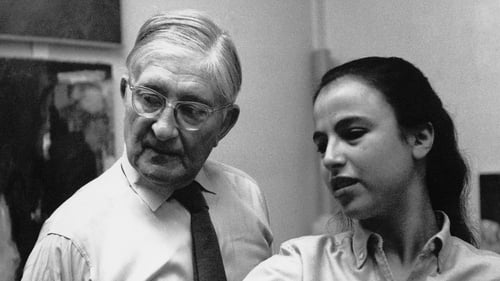
Self
German American artist Eva Hesse (1936 – 1970) created her innovative art in latex and fiberglass in the whirling aesthetic vortex of 1960s New York. Her flowing forms were in part a reaction to the rigid structures of then-popular minimalism, a male-dominated movement. Hesse’s complicated personal life encompassed not only a chaotic 1930s Germany, but also illness and the immigrant culture of New York in the 1940s. One of the twentieth century’s most intriguing artists, she finally receives her due in this film, an emotionally gripping journey with a gifted woman of great courage.

Director
Directed by Werner Nekes.

Director
Directed by Werner Nekes

Himself
A documentary about the 'critical mass', the Film Coop, a group of young filmmakers in Hamburg during the 1960s - a small group far from the Mainstream or the New German Cinema.

Editor
The painter gazes at his female model, or how voyeurism is transformed into culture. An erotic adventure film where the theme is the viewer himself.

Director of Photography
The painter gazes at his female model, or how voyeurism is transformed into culture. An erotic adventure film where the theme is the viewer himself.

Screenplay
The painter gazes at his female model, or how voyeurism is transformed into culture. An erotic adventure film where the theme is the viewer himself.

Director
The painter gazes at his female model, or how voyeurism is transformed into culture. An erotic adventure film where the theme is the viewer himself.

Producer
Other essential predecessors of film were those devices that created the illusion of motion by taking advantage of the persistence of vision and the stroboscopic effect, such as the thaumatrope, phenakistoscope or wheel of life, zoetrope or magic drum and praxinoscope and later on, the more sophisticated flip-books such as the kinora and mutoscope.

Director
Other essential predecessors of film were those devices that created the illusion of motion by taking advantage of the persistence of vision and the stroboscopic effect, such as the thaumatrope, phenakistoscope or wheel of life, zoetrope or magic drum and praxinoscope and later on, the more sophisticated flip-books such as the kinora and mutoscope.

Writer
Other essential predecessors of film were those devices that created the illusion of motion by taking advantage of the persistence of vision and the stroboscopic effect, such as the thaumatrope, phenakistoscope or wheel of life, zoetrope or magic drum and praxinoscope and later on, the more sophisticated flip-books such as the kinora and mutoscope.
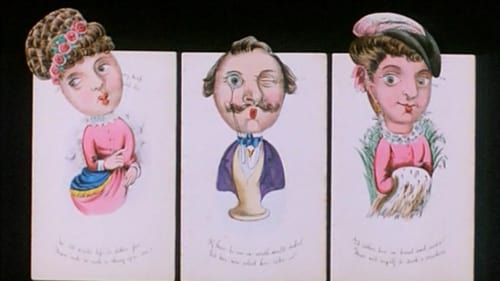
Producer
The film looks at ways of creating spezial illusions through amiguous images, perspective theatres, folding peepshows and from the 19th century, the stereoscope, which look forward to today’s holography.

Writer
The film looks at ways of creating spezial illusions through amiguous images, perspective theatres, folding peepshows and from the 19th century, the stereoscope, which look forward to today’s holography.

Director
The film looks at ways of creating spezial illusions through amiguous images, perspective theatres, folding peepshows and from the 19th century, the stereoscope, which look forward to today’s holography.

Producer
The history of the magic lantern with demonstrations of moving slides, watertank or polarisation slides, followed by images on paper, which are brought to life with mechanical manipulations, with light shining through them or as panorama.

Writer
The history of the magic lantern with demonstrations of moving slides, watertank or polarisation slides, followed by images on paper, which are brought to life with mechanical manipulations, with light shining through them or as panorama.

Director
The history of the magic lantern with demonstrations of moving slides, watertank or polarisation slides, followed by images on paper, which are brought to life with mechanical manipulations, with light shining through them or as panorama.

Writer
The film traces the history of the camera obscura, the understanding of perspective and anamorphosis, peepshows and it shows the beauty of historical shadowtheaters and shadow toys.

Producer
The film traces the history of the camera obscura, the understanding of perspective and anamorphosis, peepshows and it shows the beauty of historical shadowtheaters and shadow toys.

Director
The film traces the history of the camera obscura, the understanding of perspective and anamorphosis, peepshows and it shows the beauty of historical shadowtheaters and shadow toys.

Director
Picture montage was a central aspect in the early history of visual media. As early as the 16th century, techniques such as the folding picture montage anticipated those used in film today. Other examples of early forms of montage are transparencies, picture puzzles and blow books, which direct the gaze towards hidden information. In the myriorame, the multi-thousand picture-show, it is possible to assemble infinite landscapes.
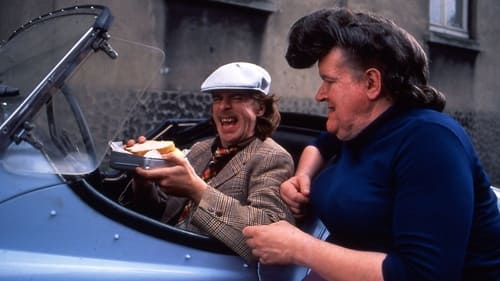
Man in Swimclothing
The funny clown Bratislav Metulskie is found dead in circus "Apollo". The retired commissioner 00 Schneider is asked to assume control of the case. Schneider and his aged sidekick Körschgen investigate to find the murderer.

himself
An exhilarating and amusing encyclopedic look at the "prehistory" of cinema. Werner Nekes charts the fascination with moving pictures which led to the birth of film, covering shadow plays, peep shows, flip books, flicks, magic lanterns, lithopanes, panoramic, scrolls, colorful forms of early animation, and numerous other historical artiffices. Working with these formats, early "producers" created melodramas, comedies, -- as well as lots of pornography -- anticipating most of the forms known today. Nekes probes these colorful toys and inventions in a rich and rewarding optical experience. Film Before Film is a bewildering assault of exotic (and sometimes erotic) images and illusions.

Director
An exhilarating and amusing encyclopedic look at the "prehistory" of cinema. Werner Nekes charts the fascination with moving pictures which led to the birth of film, covering shadow plays, peep shows, flip books, flicks, magic lanterns, lithopanes, panoramic, scrolls, colorful forms of early animation, and numerous other historical artiffices. Working with these formats, early "producers" created melodramas, comedies, -- as well as lots of pornography -- anticipating most of the forms known today. Nekes probes these colorful toys and inventions in a rich and rewarding optical experience. Film Before Film is a bewildering assault of exotic (and sometimes erotic) images and illusions.

Screenplay
Jurgen is an unknown electrician with a dream of pop stardom. His mother browbeats him into fame, while two managers compete for his contract. All Johnny really wants to do is get some sleep.

Director
Jurgen is an unknown electrician with a dream of pop stardom. His mother browbeats him into fame, while two managers compete for his contract. All Johnny really wants to do is get some sleep.

N°261
Reel 27 of Gérard Courant’s on-going Cinematon series.
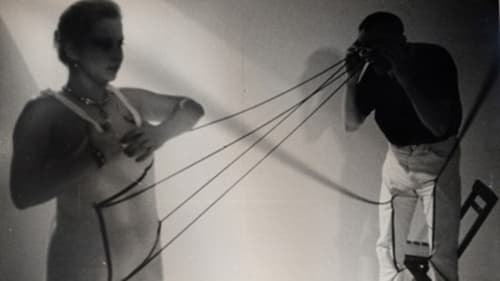
Writer
Director Werner Nekes has created this experimental film in the mode of James Joyce's Ulysses to the extent that human interactions are represented by poetic, symbolic images and language, with a certain amount of nudity added in. ~ Eleanor Mannikka, Rovi

Director
Director Werner Nekes has created this experimental film in the mode of James Joyce's Ulysses to the extent that human interactions are represented by poetic, symbolic images and language, with a certain amount of nudity added in. ~ Eleanor Mannikka, Rovi

Director
The German artist Joseph Beuys is reflecting on his theory of art, being filmed as a kinetic sculpture. In 1981, the film has won the German film critic's award for “Best short film in Germany”.

Director

Director
A sleeping girl is plagued by strange dreams; manifold images fuse to create a bewildering puzzle, which finally dissolves and gives way to relief when the agitated girl, calmed by her mother, falls asleep again. An experimental film, also for children.

Director
"HURRYCAN has nothing to do with whirlwinds, although in this Nekes film the pictures journey across the screen, excitedly, spasmodically and flickering. The title weds the element of haste with the notion of a film can, which in this case turns out to be something of a Pandora's Box and contains expectations for a new way of seeing. A computerized shutter system that Nekes had built" (Aus: filmmakers cooperative catalogue No. 7) - http://wernernekes.de/00_cms/cms/front_content.php?idart=548

Director

Director
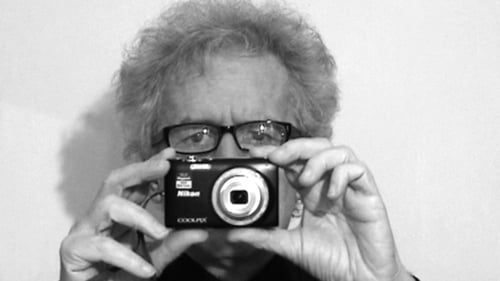
N°261
Cinématon is a 156-hour long experimental film by French director Gérard Courant. It was the longest film ever released until 2011. Composed over 36 years from 1978 until 2006, it consists of a series of over 2,821 silent vignettes (cinématons), each 3 minutes and 25 seconds long, of various celebrities, artists, journalists and friends of the director, each doing whatever they want for the allotted time. Subjects of the film include directors Barbet Schroeder, Nagisa Oshima, Volker Schlöndorff, Ken Loach, Benjamin Cuq, Youssef Chahine, Wim Wenders, Joseph Losey, Jean-Luc Godard, Samuel Fuller and Terry Gilliam, chess grandmaster Joël Lautier, and actors Roberto Benigni, Stéphane Audran, Julie Delpy and Lesley Chatterley. Gilliam is featured eating a 100-franc note, while Fuller smokes a cigar. Courant's favourite subject was a 7-month-old baby. The film was screened in its then-entirety in Avignon in November 2009 and was screened in Redondo Beach, CA on April 9, 2010.

Writer
Two men travel around.

Director
Two men travel around.

Director
An experimental film about the interpenetration of various levels of communication, dealing with the relationship of the pictorial functions to those of sound (direct sound).

Director

Director
Directed by Werner Nekes.

Director
Directed by Werner Nekes.

Director
A film by Werner Nekes.

Director
A film by Werner Nekes.

Director
A sequence of 4 films: knots, texture, web, plaited--four approaches of writing with light to reflect the possibilities of painting within film.

Director
An adventure film, a journey into light. This film is dedicated to Joseph Plateau, the discoverer of the cinematographic principle, who while exploring the inertia of perception stared into the sun until he was blinded. I made this film because I love the ending of the 'Adventures of Arthur Gordon Pym' by Edgar Allan Poe.

Director
Makimono is an Asian roll painting depicting a landscape. The subject of the film is the language of film itself, its mutability and its influence on the viewer's vision and thinking. While the film gradually progresses the viewer is gently invited to reflect on the development of the film in its expressive potential.

An experimental film where a particular space is constantly "present" : there is a complex usage of superim- position, and of split-screen effects. The place shown is a part of a house in the country. Doors and windows are continually shown, emphasizing the film's concern with framing. Other images are present: city-scapes of a particularly sinister nature, implying a sense of ruin, and shots of a chorus on a stage. These shots begin and end the film which is accompanied by a vocal chant on the soundtrack.

Director
A part of Werner Nekes' lyrical anthology DIWAN.

Director
A part of Werner Nekes' lyrical anthology DIWAN.

Director
A part of Werner Nekes' lyrical anthology DIWAN.

Producer
Largometraje dividido en cinco episodios: Sun-a-Mul, Alternatim, Kantilene, Moto y Hynningen, Diwan es una película puertas afuera con gente. Con gente que no es ni más ni menos que una parte de la preciosa y exquisitamente fotografiada naturaleza que la rodea. Lo que Nekes logra con paisajes, en un medio que avanza en el tiempo -cómo derrota a un tiempo que modifica las cosas al emplearlo para modificar el paisaje, cómo perturba o destruye las leyes de la cronología a través del mecanismo de rebobinado de la cámara- es un proyecto experimental cautivante.

Largometraje dividido en cinco episodios: Sun-a-Mul, Alternatim, Kantilene, Moto y Hynningen, Diwan es una película puertas afuera con gente. Con gente que no es ni más ni menos que una parte de la preciosa y exquisitamente fotografiada naturaleza que la rodea. Lo que Nekes logra con paisajes, en un medio que avanza en el tiempo -cómo derrota a un tiempo que modifica las cosas al emplearlo para modificar el paisaje, cómo perturba o destruye las leyes de la cronología a través del mecanismo de rebobinado de la cámara- es un proyecto experimental cautivante.

Editor
Largometraje dividido en cinco episodios: Sun-a-Mul, Alternatim, Kantilene, Moto y Hynningen, Diwan es una película puertas afuera con gente. Con gente que no es ni más ni menos que una parte de la preciosa y exquisitamente fotografiada naturaleza que la rodea. Lo que Nekes logra con paisajes, en un medio que avanza en el tiempo -cómo derrota a un tiempo que modifica las cosas al emplearlo para modificar el paisaje, cómo perturba o destruye las leyes de la cronología a través del mecanismo de rebobinado de la cámara- es un proyecto experimental cautivante.

Cinematography
Largometraje dividido en cinco episodios: Sun-a-Mul, Alternatim, Kantilene, Moto y Hynningen, Diwan es una película puertas afuera con gente. Con gente que no es ni más ni menos que una parte de la preciosa y exquisitamente fotografiada naturaleza que la rodea. Lo que Nekes logra con paisajes, en un medio que avanza en el tiempo -cómo derrota a un tiempo que modifica las cosas al emplearlo para modificar el paisaje, cómo perturba o destruye las leyes de la cronología a través del mecanismo de rebobinado de la cámara- es un proyecto experimental cautivante.

Director
A part of Werner Nekes' lyrical anthology DIWAN.

Director
Hynningen (Swedish for ‘honey roof’) begins with long multiple exposures of a landscape with a clearing, opening up to the horizon.

Writer
Largometraje dividido en cinco episodios: Sun-a-Mul, Alternatim, Kantilene, Moto y Hynningen, Diwan es una película puertas afuera con gente. Con gente que no es ni más ni menos que una parte de la preciosa y exquisitamente fotografiada naturaleza que la rodea. Lo que Nekes logra con paisajes, en un medio que avanza en el tiempo -cómo derrota a un tiempo que modifica las cosas al emplearlo para modificar el paisaje, cómo perturba o destruye las leyes de la cronología a través del mecanismo de rebobinado de la cámara- es un proyecto experimental cautivante.

Director
Largometraje dividido en cinco episodios: Sun-a-Mul, Alternatim, Kantilene, Moto y Hynningen, Diwan es una película puertas afuera con gente. Con gente que no es ni más ni menos que una parte de la preciosa y exquisitamente fotografiada naturaleza que la rodea. Lo que Nekes logra con paisajes, en un medio que avanza en el tiempo -cómo derrota a un tiempo que modifica las cosas al emplearlo para modificar el paisaje, cómo perturba o destruye las leyes de la cronología a través del mecanismo de rebobinado de la cámara- es un proyecto experimental cautivante.

Director

Director
The film is divided into five parts differing in pictorial and musical structure. The plot, two women and their love for one another, is of secondary importance. An ingenious combination of stereoscopic images and montage of individual pictures make new qualities of perception accessible to the viewer. In the final part of the love scenes pictorial sequences and music build up to a delirious rhythm.

Director

Director
SPACECUT makes the frame a very strong culminating structure. Every frame is different, yet the almost half hour assembly of images results in a picture of one place being filmed. SPACECUT has two sections, the second being the frame composite, whereas the first consists of long takes. Within the swirling, fleeting frames the eye receives picture after picture like an enormous, exciting puzzle. Strangely enough, it receives it only by absorption - of the sky, trees, valley, rocks, shadows. The automatic retention of these flashes gives you a sense of being in this bowl of land made by the golddiggers in 1871. You might think that this use of single frames would hurt the eye, but in fact it does not. Rather the experience is one of total relaxation. (Stephen Dwoskin)

Director
"...Nekes retreats behind his film. What is left is a double portrait, in which neither Dore 0. nor the grand landscape remain unchanged. The cold of the icy coastline - long shots of stones, snow and the sea - dwindles away before the image of Dore 0. Solitude is superflous, when the grandiose mountain meadow invites somersaults. ... In this case Nekes handles what he shows considerately. He releases the objects he portrays. He allows them to unfold. And so model and patterns actually serve another purpose: to let poetry grow, and energy and beauty and confidence nell'abbandono." (Dietrich Kuhlbrodt, Filmkritik, 9/1971).

Director

Director

Director
"KELEK belongs to the 'structural' or 'minimal' cinema movement in that its content is subordinated to the viewer's perception and has no intrinsic significance. Unlike most examples of this genre, though, KELEK is never boring and is brought to a new awareness of the process of perception. The five basic shots of the film have to be filled by the viewer's own consciousness and there is absolutely no opportunity given for any spurious identification." Werner Nekes

Cinematography
According to the director, "Memory is a cruel hope without awakening."

Director
This film, conceived for an "oral culture" shows cows on a pasture in Northern Germany in one single shot. With interruptions, the cows seem to attempt to concentrate on the camera... until at last two cars glide past in the background, the film's climax, gratefully received by an applauding audience... (Peter Steinhart)

Director
A satire with cinematical comedy. No other medium would permit this specific form. The comic potential of pithy scraps of dialogue between safari companions, of Tarzan's war-cries and love-stammerings was amplified by illustrating these sounds with pictures of a friendly German wood and homely elephants in a zoo. (Peter Steinhart)

Director

Director
A grotesque review of actions performed in vain and those of frustration incarnate: it is about the vain attempt to button up a pair of briefs, the failure of a cavalier, a voyeur, a couple taking part in a dance contest; five fragmentary scenes running backwards and forward, standing upright and on their head, accelerated and recurring in cuts that vary in length. A film about the voyeur in the auditorium, who is made to participate in the frustration, and about the underlying schmaltzy music, he actually shares in. (Jörg Peter Feurich)

Director

Director
A fixed shot showing six persons, looking into the camera inertly. Gradually tiny, minimal movements can be registered.

Producer
Alaska is a wordless experimental film with a simple, droning soundtrack that sounds as if it is a piece for violin and refrigerator hum.

Cinematography
Alaska is a wordless experimental film with a simple, droning soundtrack that sounds as if it is a piece for violin and refrigerator hum.

Director
Based on principles of double projection. Here, two pictures are projected on top of each other: on the upper screen is K, the head of the actor, while ÖRPER can be seen on the lower picture. The head can move in harmony and disharmony with his body.

Director

Director

Director

Director
The film is a reflection upon life and it reflects itself in a surprising time-construction... a composition of two triangular pictures, one over the other and touching at their tips. An almost monotonous similarity, subjected to no more than subtle changes, allows the spectator a number of diverse visual perspectives. (Hans Peter Kochenrath)

Director
I. Demonstration of divergent movements of 26 people and two horses.
II. Periodic interruption by a second filmic plane.
III. A segment of music repeated in a row.

Director

Director
In “jüm-jüm” by Dore 0. and Werner Nekes, a girl swings for 10 minutes in front of a movie screen, on which is painted a phallus (slightly abstract and fairly large) The perspective is such that the girl appears to be swinging into and out of the phallus. It is one who is content to see through the specific event. the work exhausts itself in a trivial aspect, the literary. This is most comfortable for the critic: the literary content of a work is easiest to reproduce in a literary form of criticism.

Director
This film is a poetic endeavor about Life and Death. A brown hen was selected to convey motion. The soundtrack is a collage of approximately 200 beginnings and endings of different musical pieces.

Director

Director
Changing landscape as the same day progresses.

Director

Director

Director

Director







